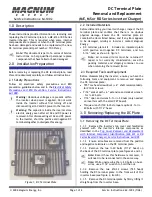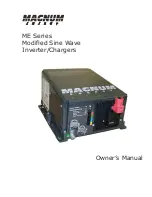
network that allows IP communication between a POWERLINK
segment and any other datalink layer protocol carrying IP e.g.
legacy Ethernet, POWERLINK etc. It is usually a separate
network element acting as Controlled Node within the
POWERLINK segment.
Router Type 2
A Type 2 POWERLINK Router is a router between a
POWERLINK segment and a CANopen network.
Sequence Layer
The POWERLINK Sequence Layer provides the service of a
reliable bidirectional connection that guarantees that no
messages are lost or duplicated and that all messages arrive in
the correct order.
Service Data Object (SDO)
Peer to peer communication with access to the object
dictionary of a device. Refer to page 72.
Slot Communication
Network Management
(SCNM)
In a POWERLINK network, the managing node allocates data
transfer time for data from each node in a cyclic manner
within a guaranteed cycle time. Within each cycle there are
slots for Isochronous Data, as well as for Asynchronous Data
for ad hoc communication. The SCNM mechanism ensures
that there are no collisions during physical network access of
any of the networked nodes thus providing deterministic
communication via Legacy Ethernet. Refer to page 61.
Source NAT (S-NAT)
S-NAT (Source - Network Address Translation) changes the
source address of the IP / ICMP packet.
StatusRequest
A StatusRequest frame is a special SoA frame used to poll the
status of a node.
StatusResponse
A StatusResponse frame is transmitted by a CN upon
assignment of the asynchronous slot via the StatusRequest in
the SoA frame.
TCP/IP
The Ethernet system is designed solely to carry data. It is
comparable to a highway as a system for transporting goods
and passengers. The data is actually transported by protocols.
This is comparable to cars and commercial vehicles
transporting passengers and goods on the highway.
Tasks handled by the basic Transmission Control Protocol (TCP)
and Internet Protocol (IP) (abbreviated to TCP/IP):
1. The sender splits the data into a sequence of packets.
2. The packets are transported over the Ethernet to the
correct recipient.
3. The recipient reassembles the data packets in the
correct order.
4. Faulty packets are sent again until the recipient
acknowledges that they have been transferred
successfully.
Topology
Network structure. Commonly used structures:
•
Line topology;
•
Ring topology;
•
Star topology;
















































